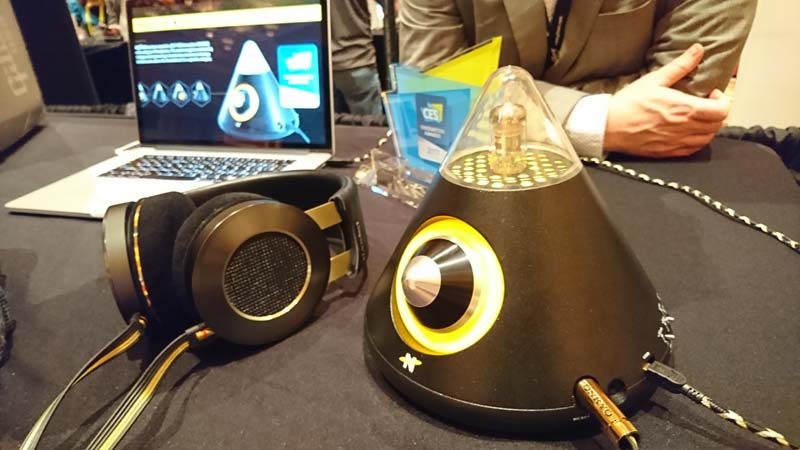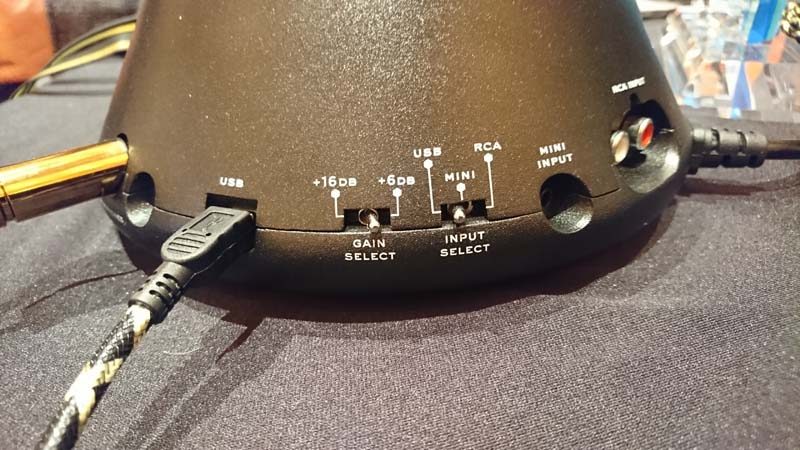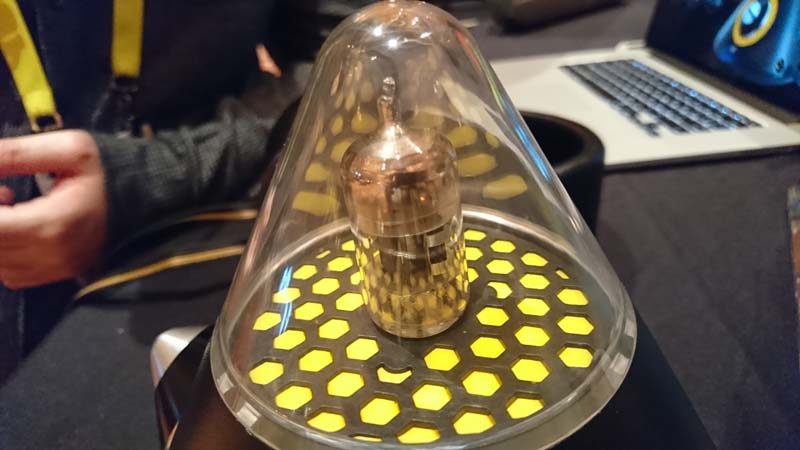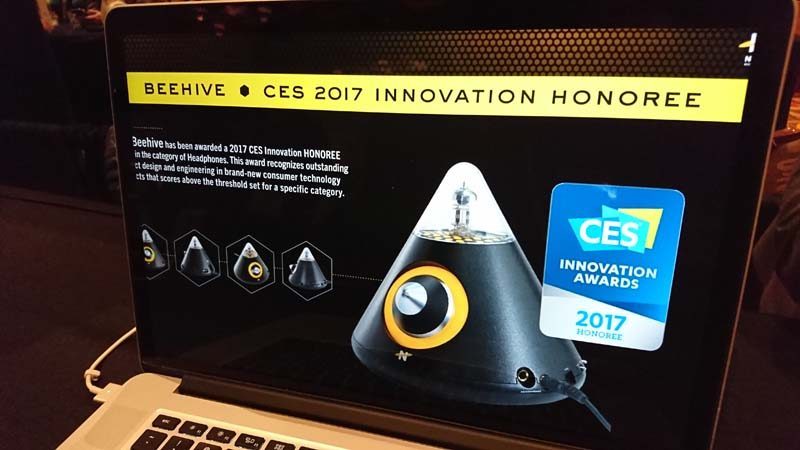Gibson Demo Neat Microphones Bee AMP at CES 2017
Peter Donnell / 8 years ago

We love a good headphone AMP/DAC and the latest from Neat Microphones, a division of Gibson Audio, was one of the most unique we saw at CES 2017 this week. While I’m not 100% sold on the aesthetics, we can’t deny that it looks interesting with its “bee” design. The AMP/DAC features nothing but high-end hardware for flawless audio processing, with a range of inputs for all your audio devices, from your record deck to your PC.

Stuck on the top, you’ll find a visible vacuum-tube to give your sound a rich warm tone and powerful amplification for your audiophile grade headphones.
“The Beehive is designed to provide even and controlled power to any headphone, without adding distortion or decreasing bandwidth. The Beehive utilizes an analog power supply and capacitor-less output to ensure headphones are powered evenly and without the harmonic distortion often caused by switching power relays and capacitor-equipped outputs.” – source
It’ll handle any input you can throw at it, but also supports up to 96kHz/24bit Digital Audio Converter for high-res audio fans. It’ll handle high-performance headphone drivers with ease, and that makes it perfect for playback in the recording studio, to sitting at home in your cosy chair listening to your favourite albums.
“We’re excited with our release of the Beehive, as it offers the power and punch to deliver what is needed in today’s high-resolution music and recording environments. To be recognized as an Innovations Award Honoree validates Neat’s commitment to creating the most innovative and technologically advanced recording tools in the industry.” – Skipper Wise, President, Neat Microphones

We were lucky enough to test it out on a set of $600 Onkyo headphones, and to say I was blown away with the clarity would be an understatement. It’s not going to be cheap, but as the old saying goes, you really do get what you pay for.

No details on price, or plans for a bee-free design just yet, but if this does well, we expect to see more in the range in the future.



















